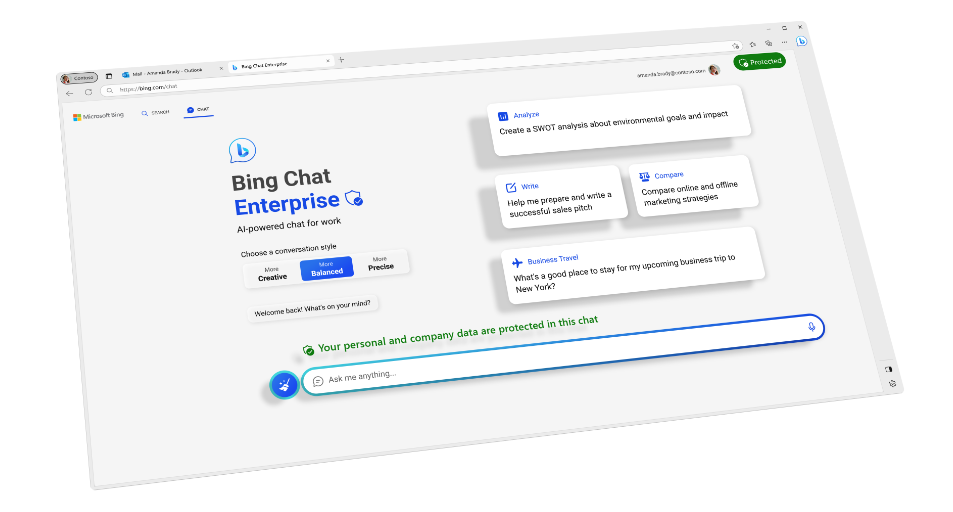Welcome to the exciting world of Large Language Models (LLMs), where artificial intelligence (AI) and natural language processing (NLP) come together to create powerful applications like chatbots and text generation.
In this data-driven, comprehensive article, we’ll dive deep into the fascinating domain of LLMs, such as GPT-4, and explore their applications in various fields.
So, buckle up and prepare to have your mind blown! 🚀
LLMs – The AI Giants
Large Language Models (LLMs) are AI models designed to understand and generate human-like text.
They are built using machine learning algorithms, specifically deep learning techniques, and trained on vast amounts of textual data. This allows them to grasp the nuances of language and mimic human writing, enabling a plethora of applications across various industries.
One such groundbreaking LLM is OpenAI’s GPT-4, the latest iteration in the Generative Pre-trained Transformer series.
NLP – The Core of LLMs
Natural Language Processing (NLP) is the cornerstone of LLMs. This subfield of AI focuses on enabling machines to comprehend, interpret, and generate human language.
NLP techniques are crucial for developing LLMs like GPT-4, which utilize machine learning and deep learning algorithms to understand the intricacies of language and generate contextually relevant responses.
Example: Let’s say you ask an LLM-based chatbot, “What’s the weather like today?”
It would analyze the text, understand the context, and provide an appropriate response based on its vast knowledge.
How to build your own LLMs from scratch?
Building your own Large Language Model (LLM) can be a challenging but rewarding experience.
Here’s a high-level guide to help you get started:
- Choose your model architecture: Select a neural network architecture suitable for NLP tasks, such as the Transformer or Long Short-Term Memory (LSTM) models.
- Collect a large dataset: LLMs require vast amounts of textual data for training. Gather a diverse and high-quality dataset that covers a wide range of topics and linguistic styles.
- Preprocess the data: Clean and preprocess your dataset to ensure it’s ready for training. This includes tokenization (breaking the text into words or subwords), removing special characters, and converting text to numerical representations (e.g., word embeddings or one-hot encoding).
- Split the data: Divide your dataset into training, validation, and test sets. The training set is used for model training, the validation set for hyperparameter tuning and model selection, and the test set for final model evaluation.
- Train the model: Train your selected model on the preprocessed data using machine learning techniques like gradient descent and backpropagation. This step can be resource-intensive and may require powerful GPUs or cloud-based solutions for larger models.
- Fine-tune the model: Adjust the model’s hyperparameters and architecture as needed to improve its performance. This can involve tweaking the learning rate, batch size, or the number of layers in the model.
- Evaluate the model: Measure the performance of your LLM using various evaluation metrics like perplexity, accuracy, F1 score, or BLEU score, depending on the specific NLP task.
- Implement the model: Once your LLM is ready, integrate it into your desired application, such as a chatbot, text summarizer, or sentiment analyzer.
- Monitor and update: Continuously monitor the performance of your LLM in real-world applications, gather user feedback, and retrain or fine-tune the model as necessary to maintain its effectiveness.
Keep in mind that building a high-performing LLM can be complex and resource-intensive.
You may also consider using pre-trained models like GPT-3 or BERT and fine-tuning them for your specific tasks.
These models are developed by leading AI research organizations like OpenAI and Google, and offer a strong foundation for various NLP tasks.
How LLMs works?
Large Language Models (LLMs) work by leveraging advanced machine learning techniques, specifically deep learning, to understand and generate human-like text.
Here’s a high-level overview of how LLMs work:
- Data Collection: LLMs are trained on vast amounts of textual data from various sources like websites, books, and articles. This diverse data enables the models to learn grammar, syntax, and even some facts and figures about the world.
- Preprocessing: The collected data is cleaned and preprocessed, which includes tokenization (splitting text into words or subwords), removing special characters, and converting text into numerical representations (e.g., word embeddings or one-hot encoding).
- Model Architecture: LLMs often use neural network architectures designed for NLP tasks, such as Transformer, LSTM, or GRU. These architectures can handle the sequential nature of language and capture long-range dependencies between words.
- Training: The model is trained using the preprocessed data and a suitable loss function (e.g., cross-entropy loss). The training process involves adjusting the weights and biases of the neural network to minimize the loss function.
- This is typically done using optimization algorithms like stochastic gradient descent and backpropagation. Training an LLM can be resource-intensive and may require powerful GPUs or cloud-based solutions.
- Fine-tuning: After the initial training, the model can be fine-tuned on smaller, domain-specific datasets to adapt its knowledge to specific tasks or industries. This enables LLMs to perform well in various applications, such as chatbots, text summarization, or sentiment analysis.
- Inference: Once trained, LLMs can generate contextually relevant text by predicting the most likely next word or sequence of words given a text prompt.
- The model utilizes the learned weights and biases to determine the probability of each possible next word and selects the one with the highest probability. This process is repeated until the desired text length or a stop condition is reached.
In summary, LLMs work by learning patterns and structures in language from vast amounts of textual data, using advanced neural network architectures and optimization algorithms.
They generate human-like text by predicting the most probable next words based on the context provided in a given text prompt.
Open-source LLMs
These LLMs are all licensed for commercial use (e.g., Apache 2.0, MIT, OpenRAIL-M). Contributions welcome!
LLMs for code
| Language Model | Checkpoints | Paper/Blog | Size | Context Length | Licence |
|---|---|---|---|---|---|
| SantaCoder | santacoder | SantaCoder: don’t reach for the stars! | 1.1B | ? | OpenRAIL-M v1 |
| StarCoder | starcoder | StarCoder: A State-of-the-Art LLM for Code, StarCoder: May the source be with you! | 15B | 8192 | OpenRAIL-M v1 |
| Replit Code | replit-code-v1-3b | Training a SOTA Code LLM in 1 week and Quantifying the Vibes — with Reza Shabani of Replit | 2.7B | infinity? (ALiBi) | CC BY-SA-4.0 |
Source : https://github.com/eugeneyan/open-llms
Applications of LLMs
- Chatbots: AI-driven chatbots powered by LLMs are revolutionizing customer support, offering personalized and contextually relevant assistance to users.
- Text Generation: LLMs can generate human-like text, making them invaluable for content creation, summarization, and even creative writing.
- Sentiment Analysis: Businesses can harness the power of LLMs to analyze customer feedback and gauge overall sentiment, allowing them to make data-driven decisions.
- Translation: LLMs can be employed for accurate and context-aware translation between languages, bridging the communication gap across the globe.
- Code Completion: Developers can benefit from LLMs as they provide intelligent code suggestions, improving efficiency and reducing errors in the software development process.
The Future of LLMs
OpenAI’s GPT-4 is a prime example of the capabilities of LLMs, offering unparalleled language understanding and generation.
Its advanced deep learning algorithms allow it to adapt and fine-tune its knowledge, making it a powerful tool for various applications, from chatbots to code completion.
Example: Let’s say you’re working on a Python project, and you’re unsure how to write a specific function. With GPT-4’s code completion capabilities, you could receive intelligent suggestions to help you create the desired function. 🐍
Conclusion
The world of LLMs, such as GPT-4, is transforming the way we interact with technology and paving the way for a more connected, intelligent, and efficient future.
By leveraging the power of artificial intelligence, natural language processing, and deep learning, these models are revolutionizing industries and applications, from chatbots to sentiment analysis.
As LLMs continue to advance, we can expect even more innovative and exciting applications that will reshape our digital landscape.
So, keep your eyes peeled for the latest developments in the thrilling realm of Large Language Models! 😊
FAQs
LLMs are computer programs that use artificial intelligence to understand and generate human language. These models are trained on massive amounts of text data to be able to predict and generate text with a high level of accuracy and fluency.
The purpose of LLMs is to provide a way for machines to understand and generate human language. This has a wide range of applications, including natural language processing, machine translation, chatbots, and more.
LLMs are trained using a process called supervised learning, where the model is fed large amounts of text data and learns to predict the next word or sequence of words based on the context of the text.
Traditional rule-based language processing systems rely on a set of predefined rules to analyze and generate language, while LLMs learn from large amounts of data to make predictions based on the context of the text.
LLMs generate text by predicting the next word or sequence of words based on the context of the text they have been trained on.
One of the main challenges in training LLMs is the availability and quality of training data. Additionally, LLMs can also suffer from bias and may generate inappropriate or offensive content if not properly monitored.
LLMs handle ambiguity in language by taking into account the context of the text they are analyzing. This allows them to make predictions based on the most likely interpretation of the text.
LLMs can understand sarcasm and irony to some extent, but they may still struggle with more subtle forms of humor and sarcasm.
Some of the ethical concerns associated with LLMs include bias, privacy concerns, and the potential for LLMs to be used to spread disinformation or propaganda.
LLMs have had a significant impact on natural language processing, making it possible for machines to understand and generate human language with a higher degree of accuracy and fluency than ever before
Thank you for reading our blog, we hope you found the information provided helpful and informative. We invite you to follow and share this blog with your colleagues and friends if you found it useful.
Share your thoughts and ideas in the comments below. To get in touch with us, please send an email to contactus@bindspacetech.com.
You can also visit our website – Bindspace Technologies


